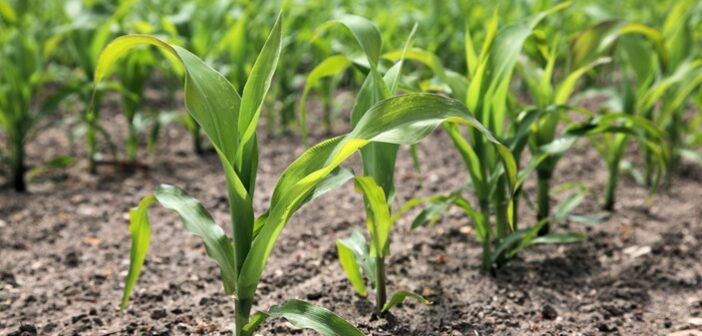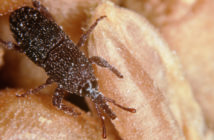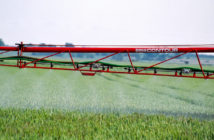As the dry weather continues, inoculating maize crops with arbuscular mycorrhizal fungi (AMF) could improve nutrient acquisition and water uptake.
That’s the view of seed biostimulant specialist Legume Technology, which claims growers could see yield boosted by up to 12%.
“AMF delivers a biostimulatory effect across a broad spectrum of crops,” says Dr Mike Thomas, the company’s research and development manager. “The fungus – a beneficial fungus – grows into a vast mycelial network throughout the soil in a field, colonising plant roots to create a symbiotic relationship that vastly improves the plant’s ability to scavenge nutrients and water.”
AMF has been shown to boost the plant’s acquisition of key nutrients such as nitrogen, phosphorus, potassium, silicon, sulphur and zinc. It does this thanks to powerful enzymes that it secretes into the soil, breaking down organic molecules that would otherwise be inaccessible to the crop.
“Of course, it doesn’t do this for ‘free’,” Dr Thomas points out. “In return, the plant feeds it with photosynthetic sugars, and that’s the symbiosis.”
In addition, many studies have demonstrated AMF’s ability to confer improved drought tolerance on a crop. “That’s because its mycelial network vastly increases the surface area available for water uptake,” adds Dr Thomas.
Substantial increase in root surface area
Dr Thomas says the scale of the mycelial network can be staggering. “For every one square centimetre of maize root surface area, the mycelial network brings an additional 30 square metres of surface area.
“That’s the same area as the service box of a standard tennis court, or half a cricket pitch – so it’s easy to understand how, across a field, the mycelium can use that vast surface area to suck every last drop of moisture from the soil and deliver it to the plant.”
Studies have shown that, in optimal conditions, AMF can deliver as much as 80% of phosphorus needs and up to 20% of the plant’s nitrogen requirement.
The company’s trials with its own AMF product, Mycofix, confirm the fungus’ ability to deliver yield increases. At thirty individual trial sites across Europe, Africa and the United States, in different soils and climates, the average yield improvement in Mycofix-treated crops was 10%.
Ideally, AMF applications are made before sowing, giving the mycelial network time to establish itself. But applications of Mycofix which is formulated as AMF spores mixed with a seaweed carrier, can also be made as a seed dressing, in-furrow, or even post-drilling.
“The earlier the mycelial network establishes, the more time the crop has to benefit from it,” explains Dr Thomas. “But with soil temperatures where they are now, the mycelium will see rapid establishment.”




